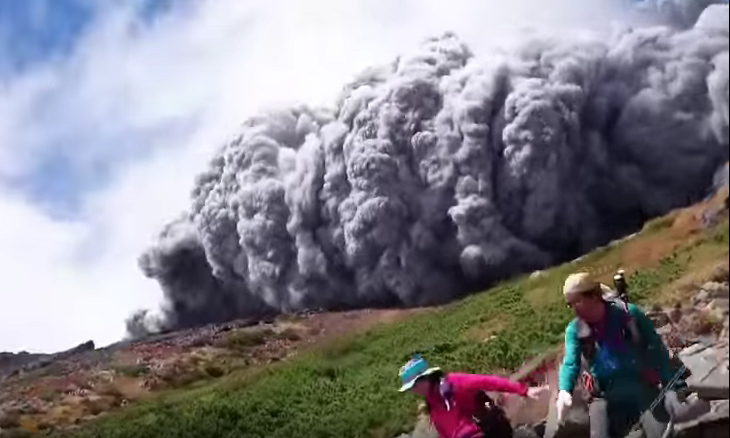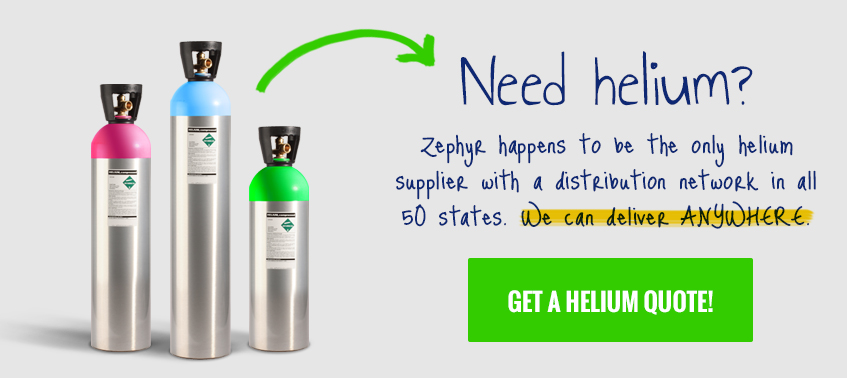Could leaking helium be the warning system we’ve been searching for when it comes to predicting volcanic activity?
Led by professor Yuji Sano, group of researchers from the University of Tokyo studied the hot springs surrounding Japan’s Mount Ontake prior to its deadly 2014 eruption, and what they’ve found could help pave the way for new early warning systems.
Specifically, Sano was looking for helium isotopes (helium-3 and helium-4) and measuring the amounts that were leaking up through the springs.
Sidebar: A quick down and dirty on helium-3 & helium-4
On our planet, helium can come from only two sources: 1. the crust, from the radioactive decay of elements like thorium or uranium, or 2. deep in the mantle, where it has been trapped since the very formation of the Earth.
Crust helium is of the heavier variation, simply known as helium-4 because of its 2 protons and 2 neutrons, whereas the lighter isotope, helium-3, (2 protons, 1 neutron) comes from deep in the mantle.
Who cares?
Well, by measuring which helium isotope is predominantly escaping, scientists can determine the source of the leaking helium and get an idea of how deep cracks, fissures, and faults are running and possibly discover increased activity along them.
The 3He/4He ratio
Actually, a massive or sudden increase in leaking helium doesn’t much matter on its own. Rather, it’s the 3He/4He ratio that makes all the difference.
The higher the 3He/4He ratio, the more the leaking helium is coming from the mantle rather than the crust. When the 3He/4He ratio suddenly spikes, that’s when it’s time to take notice because it means that something has likely shifted in the mantle.
The Mount Ontake findings
Published in the journal Scientific Reports, Sano and his team reported a very constant 3He/4He ratio at the Mount Ontake hot springs from 1981 into 2000. In 2003, that quickly changed.
From June of 2003 until 2014, the 3He/4He ratio increased significantly at the hot spring closest to the volcanic cone of Ontake. Sano didn’t understand what the leaking helium meant at the time, but he would soon after September 27, 2014, when the mountain blew without any seismic warnings, killing at least 57 people.
Is leaking helium a predictor?
Multiple studies, including Sano’s, so far seem to point to a direct correlation between a spiking 3He/4He ratio and increased activity below the ground. In fact, a live case study is happening right now at Mammoth Mountain in California.
But there’s no way to know when or even if any kind of eruption or earthquake will happen when the 3He/4He ratio spikes.
Mount Ontake spiked for a decade before finally erupting. That presents evacuation problems when you’re talking about an eruption that could happen immediately… or 10 years later.
Another current roadblock is the testing for 3He/4He. Samples have to be collected, taken back to a lab, analyzed, and returned. It’s not a fast process, nor is it a cheap one.
Sano’s and other studies show promising starts to tying rising helium isotope ratios to seismic and magmatic activity, but our ability to accurately use leaking helium as a warning signal is just now in its infancy and not the kind of testing that one can replicate in a lab.
It sure is another interesting use of helium though!
Sources: Scientific Reports, Harvard Smithsonian Center for Astrophysics, EurekAlert!, Woods Hole Oceanographic Institution


